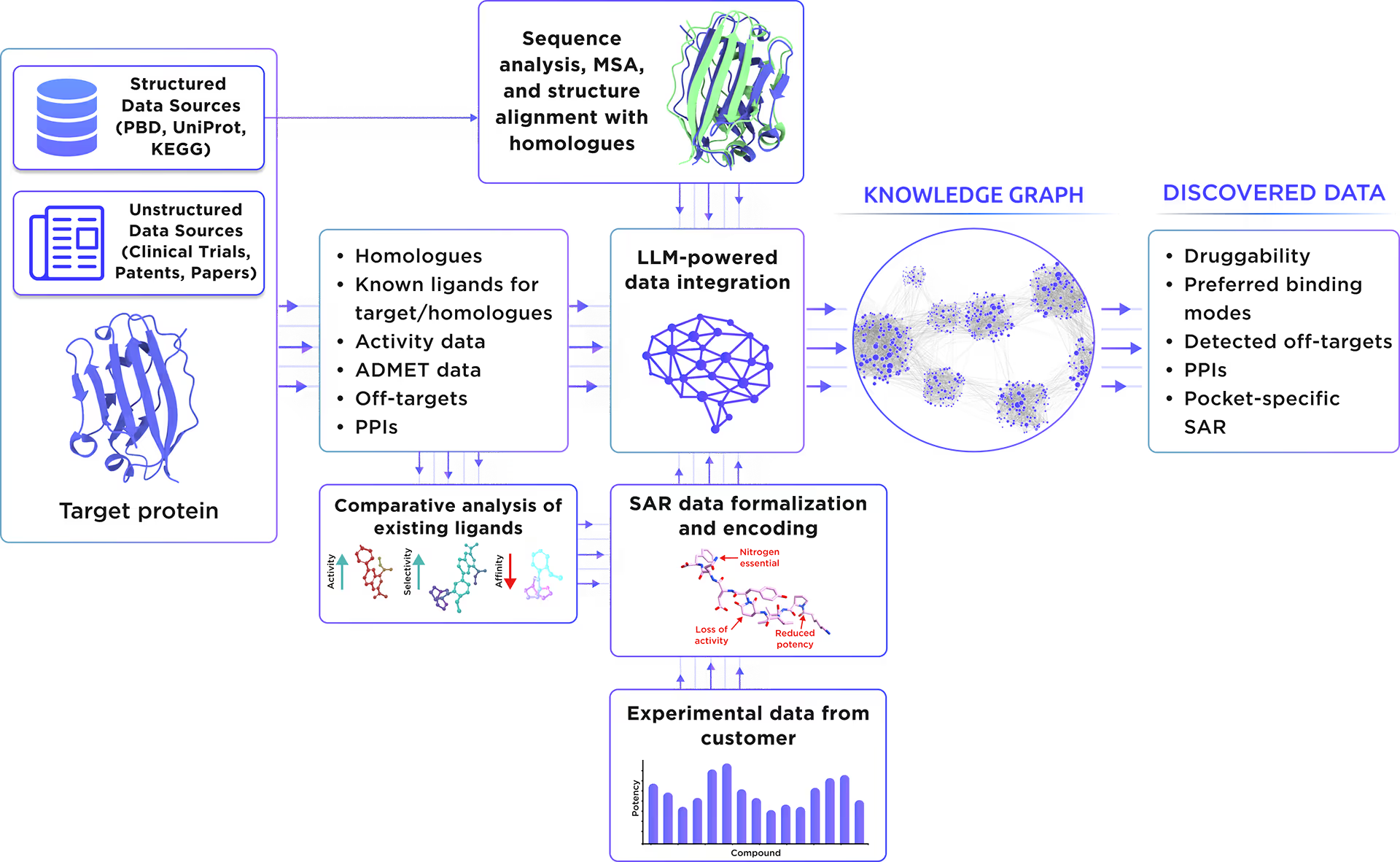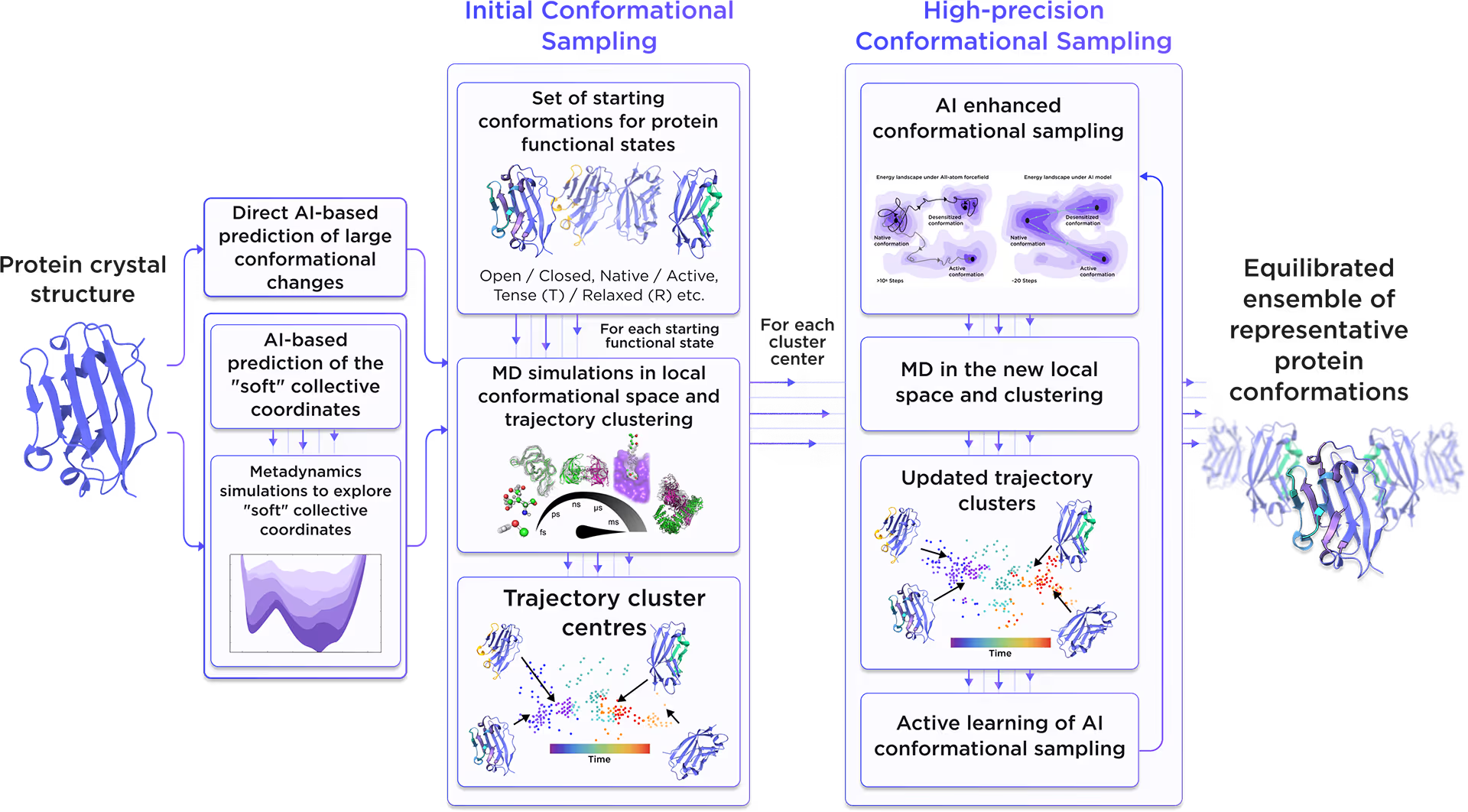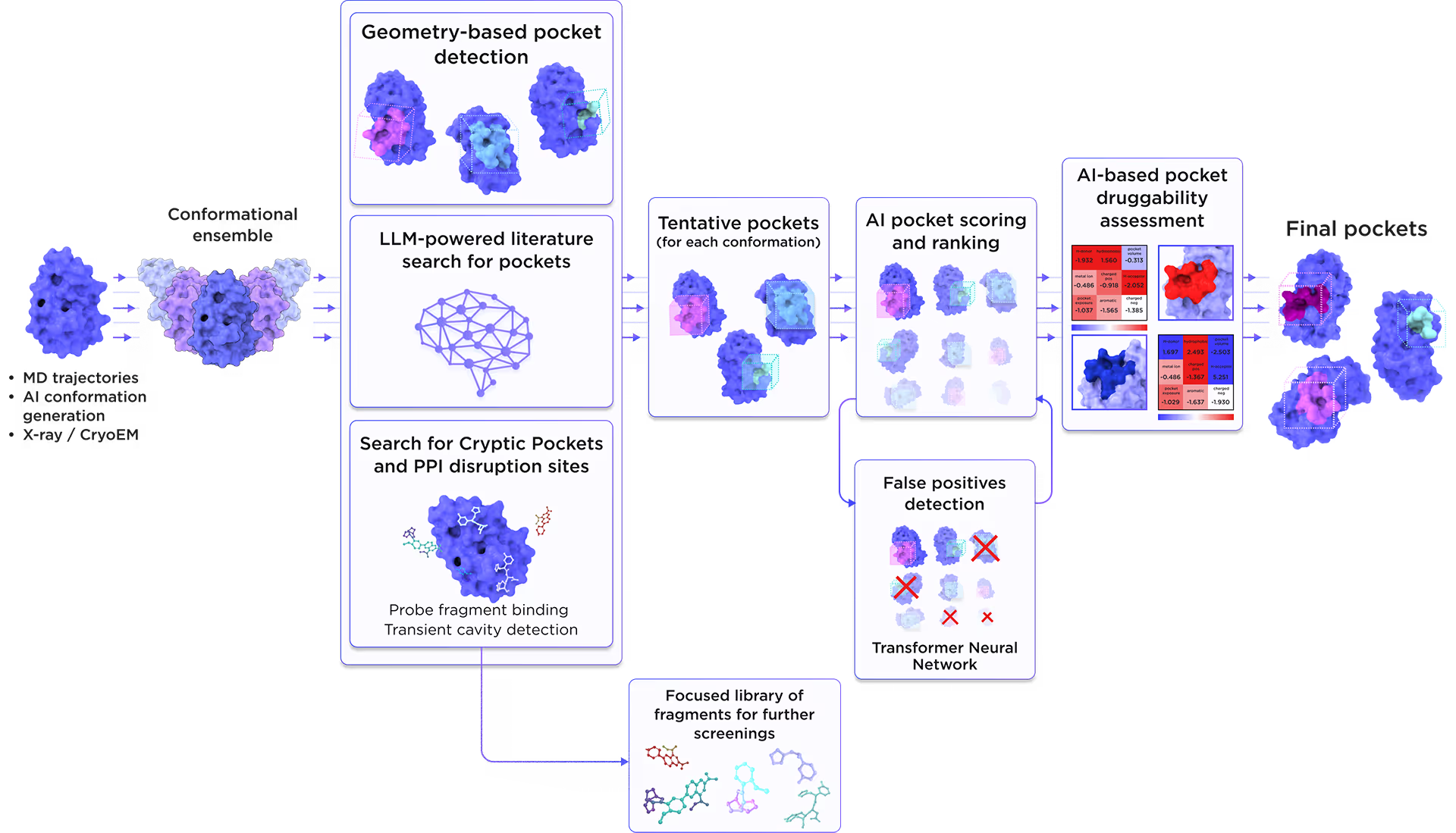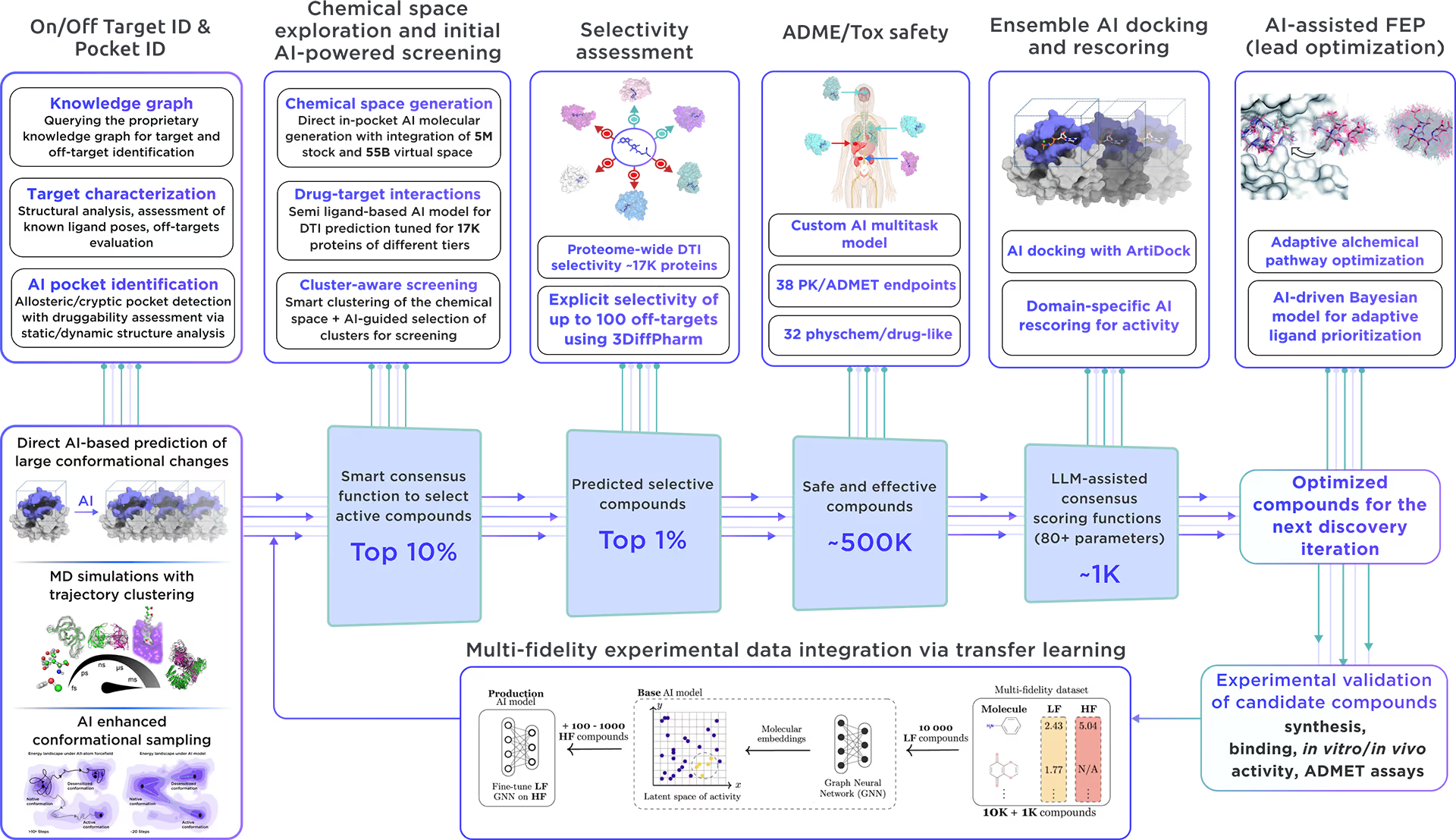

Available from Reaxense
This protein is integrated into the Receptor.AI ecosystem as a prospective target with high therapeutic potential. We performed a comprehensive characterization of RNA-binding region-containing protein 3 including:
1. LLM-powered literature research
Our custom-tailored LLM extracted and formalized all relevant information about the protein from a large set of structured and unstructured data sources and stored it in the form of a Knowledge Graph. This comprehensive analysis allowed us to gain insight into RNA-binding region-containing protein 3 therapeutic significance, existing small molecule ligands, relevant off-targets, and protein-protein interactions.

Fig. 1. Preliminary target research workflow
2. AI-Driven Conformational Ensemble Generation
Starting from the initial protein structure, we employed advanced AI algorithms to predict alternative functional states of RNA-binding region-containing protein 3, including large-scale conformational changes along "soft" collective coordinates. Through molecular simulations with AI-enhanced sampling and trajectory clustering, we explored the broad conformational space of the protein and identified its representative structures. Utilizing diffusion-based AI models and active learning AutoML, we generated a statistically robust ensemble of equilibrium protein conformations that capture the receptor's full dynamic behavior, providing a robust foundation for accurate structure-based drug design.

Fig. 2. AI-powered molecular dynamics simulations workflow
3. Binding pockets identification and characterization
We employed the AI-based pocket prediction module to discover orthosteric, allosteric, hidden, and cryptic binding pockets on the protein’s surface. Our technique integrates the LLM-driven literature search and structure-aware ensemble-based pocket detection algorithm that utilizes previously established protein dynamics. Tentative pockets are then subject to AI scoring and ranking with simultaneous detection of false positives. In the final step, the AI model assesses the druggability of each pocket enabling a comprehensive selection of the most promising pockets for further targeting.

Fig. 3. AI-based binding pocket detection workflow
4. AI-Powered Virtual Screening
Our ecosystem is equipped to perform AI-driven virtual screening on RNA-binding region-containing protein 3. With access to a vast chemical space and cutting-edge AI docking algorithms, we can rapidly and reliably predict the most promising, novel, diverse, potent, and safe small molecule ligands of RNA-binding region-containing protein 3. This approach allows us to achieve an excellent hit rate and to identify compounds ready for advanced lead discovery and optimization.

Fig. 4. The screening workflow of Receptor.AI
Receptor.AI, in partnership with Reaxense, developed a next-generation technology for on-demand focused library design to enable extensive target exploration.
The focused library for RNA-binding region-containing protein 3 includes a list of the most effective modulators, each annotated with 38 ADME-Tox and 32 physicochemical and drug-likeness parameters. Furthermore, each compound is shown with its optimal docking poses, affinity scores, and activity scores, offering a detailed summary.
RNA-binding region-containing protein 3
partner:
Reaxense
upacc:
Q96LT9
UPID:
RNPC3_HUMAN
Alternative names:
RNA-binding motif protein 40; U11/U12 small nuclear ribonucleoprotein 65 kDa protein
Alternative UPACC:
Q96LT9; A8K1C9; D3DT74; Q5TZ87; Q96FK7; Q96JI8; Q9NSU7; Q9NXX2
Background:
RNA-binding region-containing protein 3, also known as RNA-binding motif protein 40 and U11/U12 small nuclear ribonucleoprotein 65 kDa protein, plays a crucial role in pre-mRNA U12-dependent splicing. This process, carried out by the minor spliceosome, is essential for removing U12-type introns, which, although comprising less than 1% of all non-coding sequences, are vital for the correct expression of certain genes. The protein's ability to bind to the 3'-stem-loop of m(7)G-capped U12 snRNA underscores its significance in RNA processing.
Therapeutic significance:
RNA-binding region-containing protein 3 is implicated in Pituitary hormone deficiency, combined or isolated, 7, a condition characterized by severe postnatal growth failure and hypoplasia of the anterior pituitary. This association highlights the protein's potential as a target for therapeutic intervention in growth hormone deficiencies.